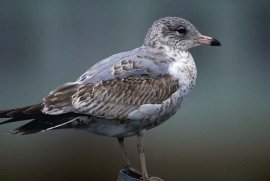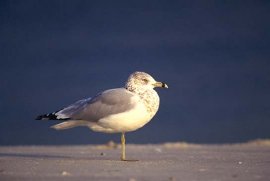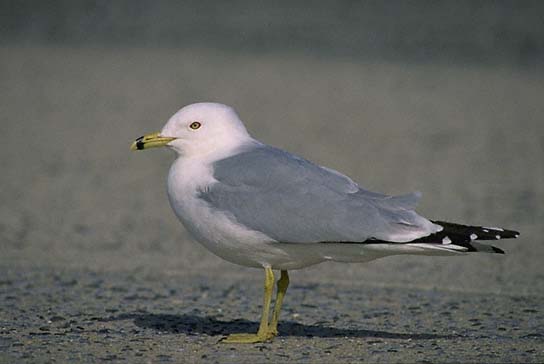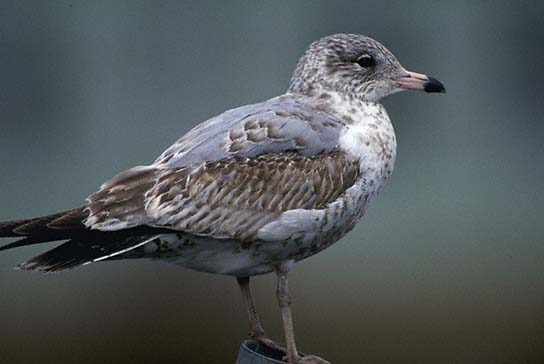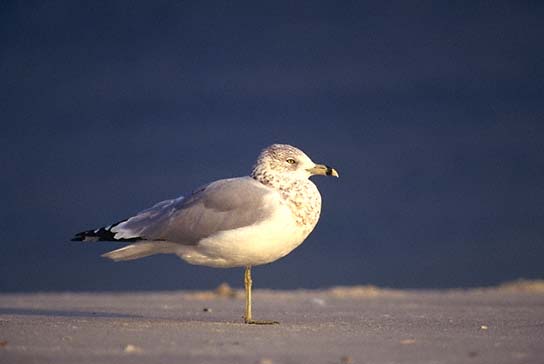Gull-like Birds
Description
18-20" (46-51 cm). Adult silvery gray on back, white on head, tail, and underparts. Similar to Herring Gull but smaller, with greenish-yellow feet and narrow black ring around bill. Young birds mottled brown, paler than young Herring Gulls, with blackish tail band and flesh-colored legs. Acquires adult plumage in 3 years. See Mew Gull.
Nesting
2-4 spotted buff or olive eggs in a hollow in the ground, sometimes lined with grass or debris. In the North they sometimes nest in low trees. Nests in colonies, often with other gulls or terns, usually on islands in lakes.
Discussion
In most of the northern part of the United States the Ring-billed Gull is a winter visitor, less common than the Herring Gull. However, in some inland areas and in the Deep South it is the more numerous of the two species. It often nests in very large colonies; as many as 85,000 pairs nest on a single island in Lake Ontario. By contrast, colonies of Herring Gulls seldom number more than a few score pairs. Mischaracterized as a seagull, this bird readily follows farm plows or scatters over meadows after heavy rains to feast on drowning earthworms.


